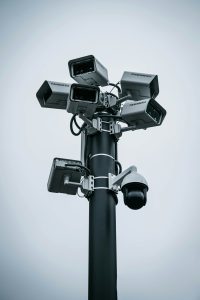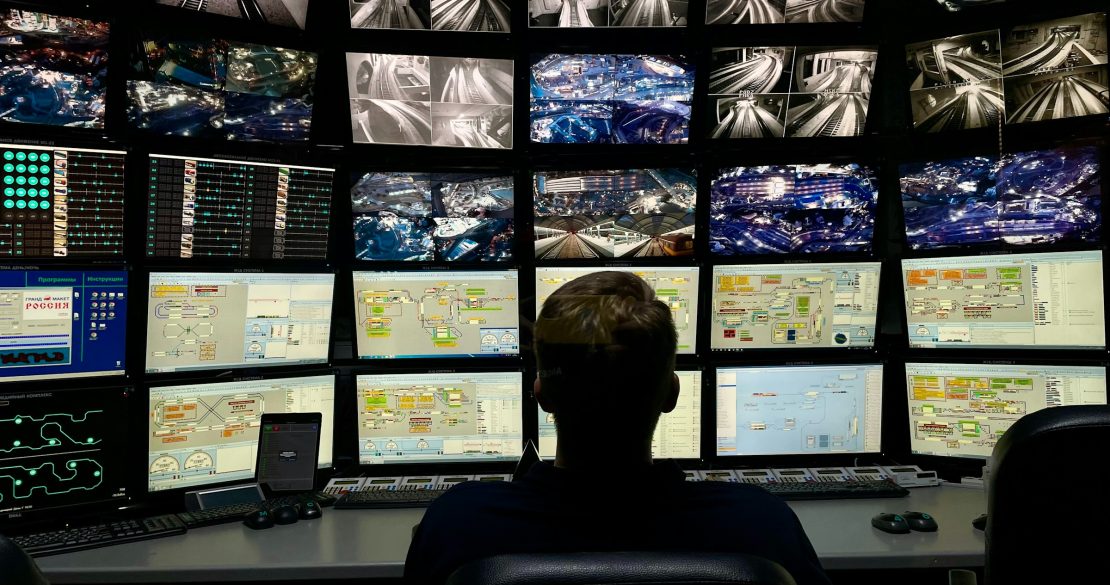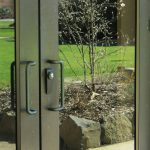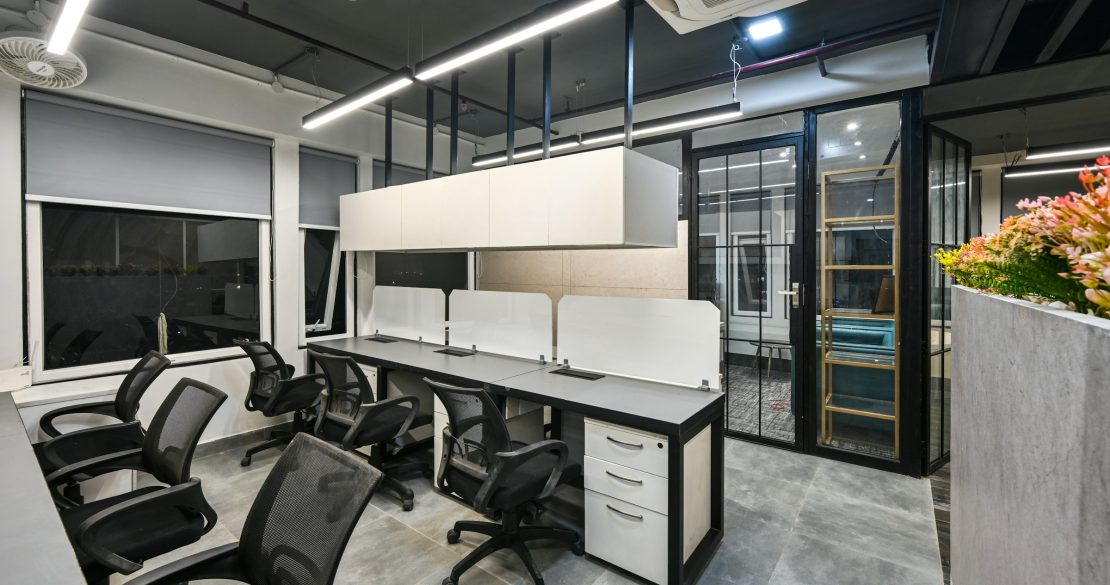When you leave for vacation, you may take some steps to enhance your home’s security. Telling a neighbor or trusted friend, leave a key so they can check on things regularly or bring in the mail, and other peace-of-mind steps. While all of this isn’t necessary to this extreme while you’re gone for the day at work or on a day trip, you still want to make sure your home is secure.
Adding safety measures like a security system with cameras, glass-break sensors, entry and motion sensors, and even panic buttons are all time-tested measures you can take to keep your home, or any building, safe and secure. As technology advances, real-time monitoring of stats like occupant numbers, perimeter, and asset monitoring, and more have made real-time tracking of your building’s security easier than ever. Installing these items increases the safety and security of your building – and the people and things inside of it.
Table of Contents
Cameras
Sensors
Occupancy Monitors
Access Control Systems
Employees
Visitors
Emergency Response Systems
Artificial Intelligence
Final Thoughts
Cameras
These are the first step in ensuring your building is as safe as possible. Outdoor security cameras keep an eye on entrances and exits, parking lots or garages, and other public spaces outside the building. Inside, they can be installed in lobbies and individual offices to keep an eye on occupied as well as unoccupied office spaces within the larger building.

A central control room with real-time monitoring of each camera means you can monitor the safety of the building without an entire team of security guards patrolling inside and out. Additionally, today’s camera systems allow you to monitor your cameras from your smart device. Flip through the various cameras, check the status of the system, monitor system updates and the like to make sure your building is safe and secure.
Sensors
If a tree falls in the forest and no one is around to hear it, does it make a sound? The age-old question could be applied to your building’s safety as well. If the glass of a window is broken or a door is opened but no one is around to hear, does it make a sound? With security sensors like glass-break and entry sensors, you’ll be alerted when someone tries to force their way in. The bonus when it comes to these sensors is that if they are not disabled after a certain period of time, emergency services are automatically dispatched to your building.
Motion sensors may be activated while the system is in a certain mode in order to record suspicious movements and contact authorities. I recall an instance when we were dog-sitting my sister-in-law’s dogs and left our system on “away” mode. The first time the dogs walked in the path of the sensor, our alarm was triggered and we were sent a notification through the app.
Occupancy Monitors
Real-time monitoring of the number of people within defined areas helps with aspects of building safety you may not have considered. The information can send alerts to your in-house security team when baseline traffic behaviors change. Occupancy monitors also provide data to a central Building Management System (BMS) to adjust conditions like fresh air ventilation, lighting, and other environmental factors that make the building run more smoothly.
These integration and data-sharing capabilities allow for holistic analysis of data from your systems to build a comprehensive understanding of the building environment. More, and more accurate data and insights into activity at the building can only better equip your security team to do their job well.
Access Control Systems
Employees
You see it in movies and on TV all the time. A character works in a high-security building where their ID badge is the key to every door, from the outside entrance to the office, and sometimes even “employees only” bathrooms and lounge areas. This is the norm for many buildings with an Access Control System (ACS). Employees in the building are issued an ID card or badge that acts as the key to all of the employee restricted areas.
To increase the security at your building, consider taking it a step further and switching from the antiquated key-card (requiring replacement and deactivation of lost cards) to a biometric-based system. Such systems allow employee access with personal biometrics like hand- or fingerprints, retina scans, or other measures. Not only does a biometric system eliminate the need for badges or keys, which come with a cost to replace, it makes it more difficult for non-employees to bypass security and gain access to spaces where they shouldn’t be.
Visitors
Say goodbye to the days of a bored security guard or secretary sitting at a front desk with a sign-in list on a clipboard. ACS conveniences can be extended to building visitors as well. Some easy things to implement when it comes to visitor monitoring include:
– Pre-registration apps and websites. These allow the visitor to request access prior to their visit.
– Check-in kiosks. Many businesses have implemented check-in kiosks in the lobby or waiting area to reduce check-in lines and wait times.
– Real-time tracking capabilities and integrations. These are added to existing surveillance systems to monitor visitor movement throughout a visit. Should a visitor try to enter restricted areas, security can be dispatched.
Emergency Response Systems
Every building, and every space in that building, has a fire alarm and sprinkler system at the bare minimum.
Emergency Response Systems (EMS) are designed to alert occupants of threats including fire, unauthorized breaches, system malfunctions, and other potential dangers and disasters, to achieve safe evacuation of all occupants while minimizing damage to expensive assets.

This, of course, is the base system. Supplementary technologies that support real-time monitoring can improve effectiveness and efficiency. Some additions you can make include:
– Geofencing. This virtual “perimeter” or “fence” around a given geographic feature, like your building. These fences are dynamically generated – a radius around a point location – or match a predefined set of boundaries, like the entirety of your building and property. The fence will alert occupants that are in the most immediate danger first.
– HVAC control integrations. Controlling the flow can lessen the propagation of smoke and fire, or chemical fumes from leaking throughout the building.
– Two-way message systems for improved communication during a security event.
– Smartphone app integrations in addition to receiving alerts from other smart building technology. These offer improved interactions and notification propagation to important contact points like facilities teams, physical security personnel, and building occupants.
– Integration of intelligent access control systems to provide the free flow of traffic to safer locations inside or outside the building.
Artificial Intelligence
Artificial Intelligence (AI) is becoming more and more prevalent into today’s society. While the argument is ongoing as to what AI should be used for and how, developers of today’s security systems are full-steam ahead. AI technologies are increasingly being integrated into smart security systems in order to enhance occupant and asset safety. There are several reasons companies have turned to AI when it comes to security. AI can:
– Detect early signs of potential failures by analyzing dating from health and safety systems.
– Use data to predict maintenance needs to ensure critical systems operate reliably.
– Simulate various emergency scenarios and predict outcomes during risk assessments and audit processes.
– Allows for the optimization of safety technologies to ensure an effective response for a range of emergency situations.
Final Thoughts
Breathe a sigh of relief when you add real-time security monitoring to your building. You can be sure everything and everyone is as safe and secure as possible, whether you’re open for business or relaxing at home after a long day at the office.
Realty Asset Advisors can help you start from the ground up with the most basic essentials and build a real-time monitoring system that effectively covers all your security bases.
Contact us today!











